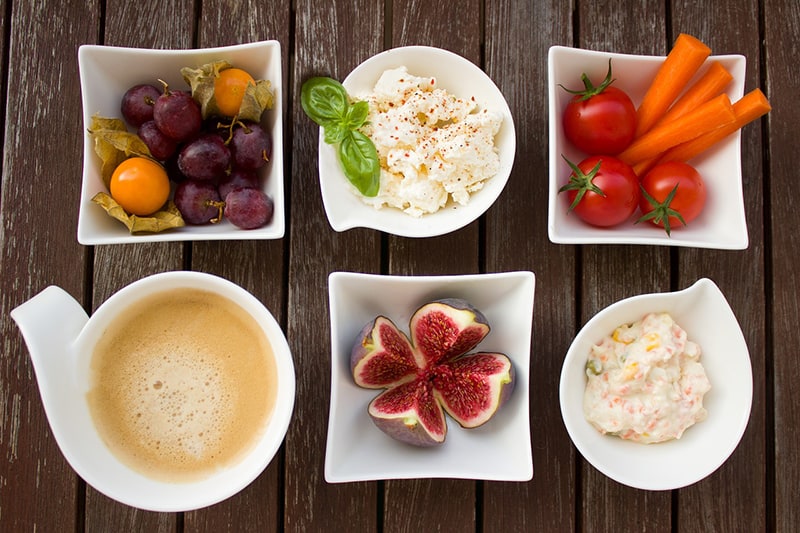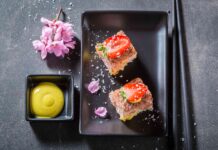 Based on the observations of executive chefs and culinary experts at Benchmark’s 80 luxury hotels, resorts and restaurants coast to coast, offshore, and internationally, the top ten dining trends for 2020 has been announced by the company.
Based on the observations of executive chefs and culinary experts at Benchmark’s 80 luxury hotels, resorts and restaurants coast to coast, offshore, and internationally, the top ten dining trends for 2020 has been announced by the company.
“More than recognizing trends, Benchmark properties are evolving food and beverage programming to not only remain relevant amid consumer demand but ensure we are operating responsibly,” says Olivier Gaupin, Benchmark’s director of culinary operations.
Patrick Berwald, Benchmark’s vice president of food and beverage goes on to say, “in addition to offering engaging experiences to each and every one of our guests, Benchmark’s position on food and beverage is to offer the opportunity to learn, focus on wellness and be part of something greater.”
- CBD
The CBD food trend has exploded in the last twelve months. What’s CBD or Cannabidiol? It’s a naturally occurring, non-psychoactive compound found in the resinous flower of Cannabis, a plant with a rich history as a medicine that goes back thousands of years and is known to reduce pain, stress, and anxiety.
2. A Sprouting Plant Ecosystem
Plant-based food alternatives are growing in popularity with products incorporating soy, peas, cashews, and almonds. By 2020, it is predicted there will be a dedicated menu for plant-based food items.
3. Healthy Snacks
New products on the snack food market are providing healthier versions than chips. With ingredients like chickpeas, beets, quinoa, and kale, these snacks are going to make “snacking” alright even if you have the whole bag of chips.
4. Jackfruit
The newest go-to meat substitute is jackfruit. Already being used as an alternative for barbecue pulled pork, jackfruit is a southeast Asian fruit that is a great source of iron, calcium, and B vitamins. The texture of jackfruit mimics the texture of pulled pork and will soon become a force in the food industry as a meat alternative.
5. Fruit Forward
Among the usual sweet flavors found on beverage menus, unique fruit flavors, such as cactus, are taking mixology ideation by storm. More specifically, spiny cactus fruits such as prickly pear and dragon fruit are peaking consumer interest. Unique fruit flavor varieties, including bergamot orange, yuzu, calamansi, citron, makrut lime, pomelo, Meyer lemon, blood orange and ugli fruit (a Jamaican form of the tangelo) are also being used.
6. Dairy Remix
Step aside almond and soy, oat milk has emerged as a popular milk alternative.
7. Sparkling Results
Sparkling water demand is exploding, driven in part by consumers who are concerned about sugar but still looking to satisfy their craving for carbonation.
8. Bright & Bold
In terms of flavors and colors, consumers are looking for bright, bold, appealing hues. Color generates emotional appeal with food and can be as important as taste. Skilled food and beverage operators have an eye for what beverages succeed on social media, where color is critically important, looking for products that are “Instagram-friendly.” Color and functionality collide with ingredients such as blue algae, beet, matcha, and butterfly pea flower tea, popular in Southeast Asia. Butterfly pea flower tea is high in antioxidants and naturally changes color from blue to purple when acidity is added to it.
9. More Traceability
As news about climate change, disappearing rainforests, and plastic in the oceans dominate the news cycle and social feeds, consumers are demanding sustainability in all forms of packaging – quickly making this integral to today’s food and beverage operating model. Whether it’s swapping out Styrofoam and plastic for paper or bamboo, or buying ingredients from sustainable sources, sustainability will sweep the entire industry in 2020. The heightened focus on single-use plastics is not just a fad but a reality that goes beyond the purge of the plastic straw.
10. Ugly Produce
Food is a terrible thing to waste. It’s bad for people and the planet, and yet 40 percent of all the food produced in the US goes uneaten because it is imperfect. From farms to fridges, food waste is a massive problem that has infiltrated every level of our food system. Now, consumers are finally accepting misshapen, bruised, and just down-right ugly foods as totally edible. Start-up food companies that send boxes of said fruit and vegetables directly to the customer’s home will encourage consumers to buy produce that is nutritious and tastes fine but is physically flawed in some way. For more information on Benchmark, click here.
DON’T MISS THESE RELATED ARTICLES
3 Innovations Shaping Food & Beverage for Tomorrow’s Meetings
5 All-the-Rage Food Trends Taking Off This Summer
How to Prepare F&B Menus for Attendees With Food Allergies










